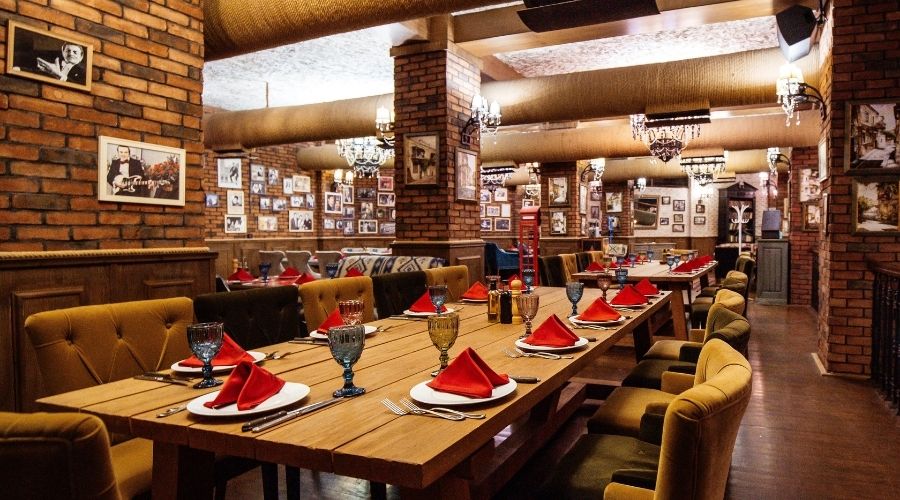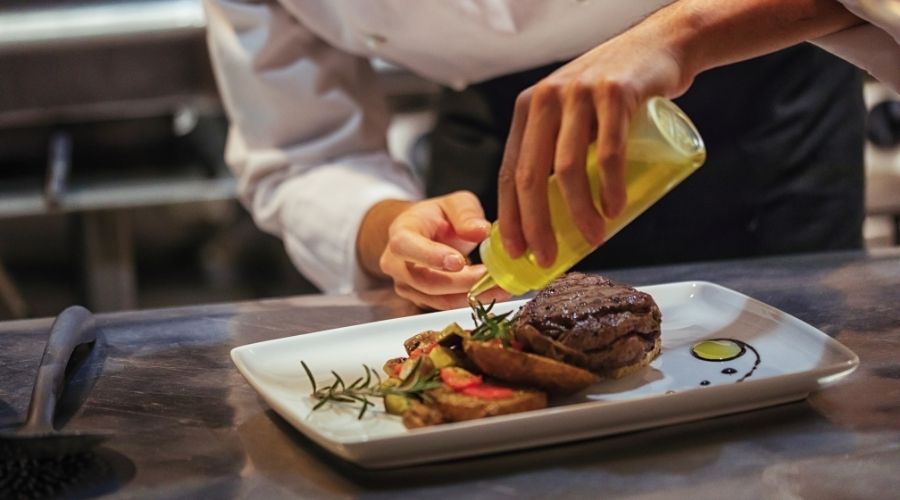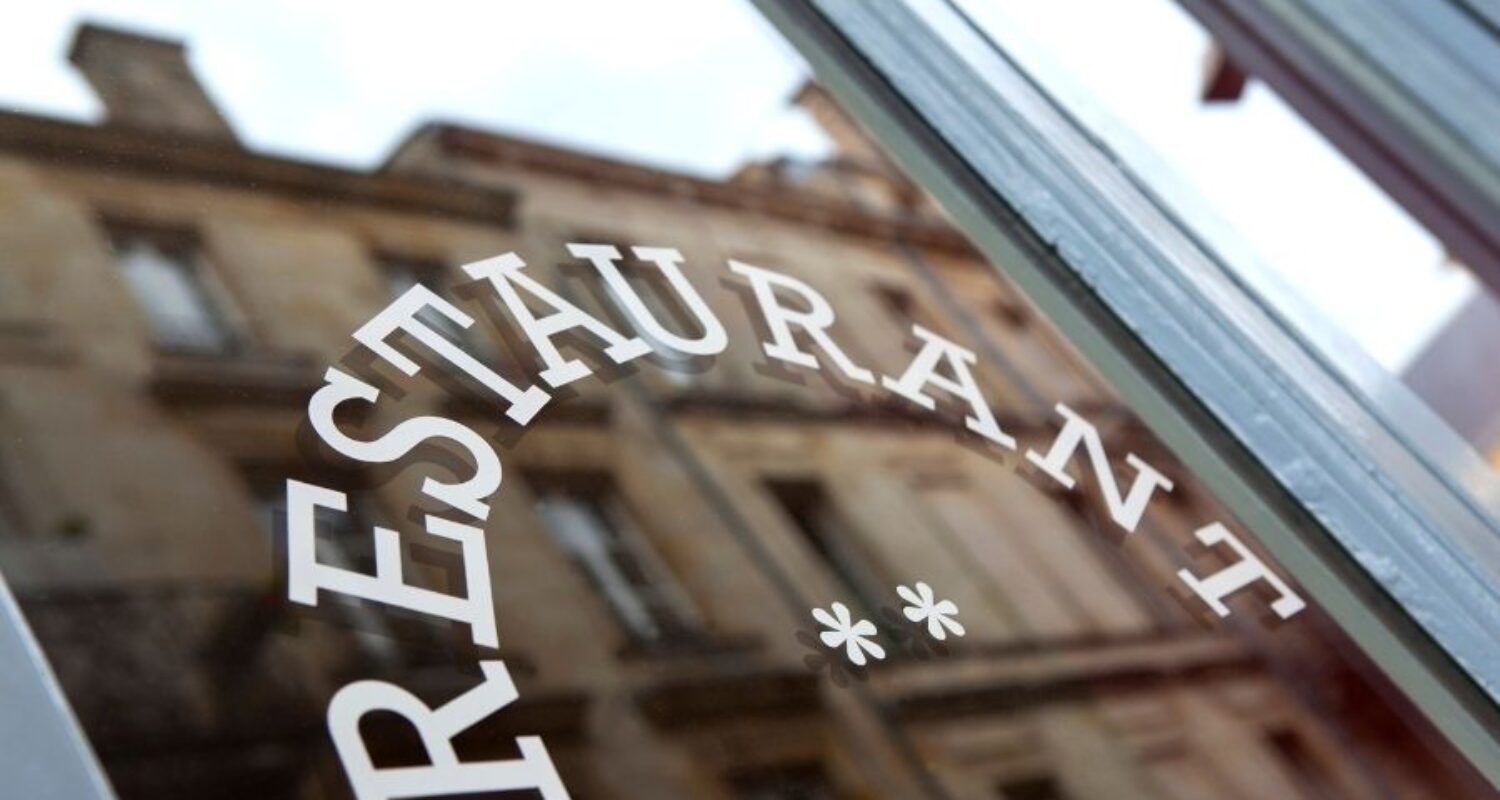In today’s digital age, an effective website has become an essential tool for restaurants to attract and engage customers. A well-designed restaurant website not only showcases your culinary offerings but also creates a lasting impression that can significantly impact your business’s success. From responsive design to seamless user experiences, the principles of effective webdesign are crucial in drawing diners to your virtual doorstep.
As consumers increasingly rely on online resources to research and discover dining options, a restaurant’s website serves as a digital storefront, reflecting the ambiance, cuisine, and overall brand identity. Crafting a website that is visually appealing, intuitive, and mobile-friendly is paramount in capturing the attention of modern customers and converting them into loyal patrons.
Key Takeaways on Effective Webdesign for Restaurants
- A well-designed restaurant website can significantly impact a business’s success by attracting and engaging customers.
- Responsive design and user-friendly experiences are essential in today’s digital landscape as customers increasingly rely on online resources to discover dining options.
- Effective webdesign principles, such as visual appeal, intuitive navigation, and mobile optimization, are crucial in creating a digital storefront that reflects a restaurant’s brand and cuisine.
- Investing in a professionally designed website can help restaurants stand out in a crowded market and create a lasting impression on potential diners.
- Ongoing website optimization and maintenance are necessary to ensure a restaurant’s online presence remains relevant and engaging.

Understanding Modern Restaurant Website Essentials
In today’s digital landscape, a restaurant’s website has become a critical component of its overall branding and customer engagement strategy. Successful restaurant websites are designed to not only showcase the establishment’s unique character, but also cater to the evolving expectations of modern diners.
Key Components of Successful Restaurant Websites
A mobile-friendly website is essential, as more and more customers are accessing restaurant information and placing orders on the go. An intuitive online ordering system integrated seamlessly into the website can significantly improve the customer experience and drive increased sales. Additionally, a strong restaurant branding presence through thoughtful design, imagery, and messaging can leave a lasting impression on potential patrons.
Current Digital Trends in the Restaurant Industry
The restaurant industry has witnessed a surge in digital transformation, with mobile ordering, contactless payments, and social media integration becoming increasingly prevalent. Restaurants that embrace these emerging trends and provide a cohesive digital experience are poised to gain a competitive edge in the market.
Meeting Customer Expectations Online
Today’s diners expect a seamless, user-friendly digital experience when interacting with a restaurant. From easily accessible menus and intuitive online ordering to comprehensive information about the establishment’s ambiance and offerings, a well-designed website can effectively cater to the needs and preferences of modern customers.
| Key Website Elements | Benefits |
|---|---|
| Mobile-Friendly Design | Enhances accessibility and user experience for on-the-go customers |
| Integrated Online Ordering | Streamlines the ordering process and boosts customer convenience |
| Robust Restaurant Branding | Builds a strong visual identity and resonates with the target audience |
Effective Webdesign for Restaurants: Core Principles and Strategies
As restaurateurs navigate the digital landscape, crafting an effective website becomes paramount. At the heart of this endeavor lies the seamless integration of user experience design and web accessibility principles. By prioritizing these core elements, restaurants can create effective webdesign for restaurants that captivates their target audience and ensures a positive online presence.
User experience design is the cornerstone of a successful restaurant website. Intuitive navigation, responsive layouts, and seamless interactions are essential in guiding customers through the digital experience. Restaurateurs must consider the unique needs and behaviors of their patrons, designing a website that anticipates and fulfills their expectations.
Equally crucial is the implementation of web accessibility standards. By ensuring that their website is inclusive and accommodating to users of all abilities, restaurants can demonstrate their commitment to inclusivity and provide an exceptional online experience for all. This may involve optimizing for screen readers, adjusting color contrasts, and enhancing keyboard accessibility.
| Principle | Key Considerations |
|---|---|
| User Experience Design |
|
| Web Accessibility |
|
By embracing these effective webdesign for restaurants principles, restaurateurs can create a digital presence that not only captivates their audience but also demonstrates their commitment to inclusivity and customer satisfaction. This holistic approach to web design will position their restaurant for success in the ever-evolving digital landscape.
Creating an Engaging Visual Identity Through Web Design
In the world of restaurant branding, the visual identity of a website plays a pivotal role in attracting and captivating potential diners. Effective web design for restaurants goes beyond simply showcasing the menu; it’s about crafting an immersive experience that reflects the restaurant’s unique personality and sets it apart from the competition.
Color Psychology in Restaurant Websites
The strategic use of color can significantly impact the emotional response of visitors to a restaurant’s website. Warm hues like red, orange, and yellow can evoke feelings of appetite and energy, while cooler tones like blue and green can convey a sense of calmness and sophistication. Carefully selecting a color palette that aligns with the restaurant’s brand identity is crucial for creating a visually striking and memorable online presence.
Typography and Brand Consistency
The typography used throughout a restaurant’s website plays a vital role in reinforcing the brand’s personality. From the choice of font styles to the layout and hierarchy of text, the typography must seamlessly integrate with the overall design to convey a cohesive and professional image. Maintaining consistent branding across all touchpoints, both online and offline, is essential for building a strong and recognizable restaurant brand.
Image Optimization for Maximum Impact
- High-quality, visually appealing images are essential for showcasing a restaurant’s dishes, ambiance, and overall experience.
- Optimizing these images for fast loading times and responsive design is crucial for providing an exceptional user experience.
- Careful consideration of image placement, size, and alt-text can further enhance the website’s visual impact and improve its search engine optimization (SEO) for the restaurant branding.
By strategically crafting an engaging visual identity through effective web design, restaurants can captivate their target audience, establish a strong brand presence, and ultimately drive more diners to their establishments.
Mobile-First Design: Optimizing for Smartphone Users
In today’s digital landscape, where mobile devices have become the primary gateway to the internet, crafting a mobile-friendly website is no longer an option, but a necessity for restaurants. By embracing a responsive web design approach, restaurateurs can ensure their online presence seamlessly adapts to the diverse screen sizes and capabilities of smartphones, delivering an exceptional user experience to their on-the-go customers.
The key to effective mobile-first design lies in understanding the unique needs and behaviors of smartphone users. These tech-savvy diners often rely on their mobile devices to research dining options, browse menus, and even place orders. By optimizing the website for mobile, restaurateurs can capture the attention of these customers, providing them with quick access to the information they need and a frictionless path to conversion.
Responsive Design Principles
Responsive web design is the foundation of a mobile-first strategy, ensuring that your restaurant’s website adjusts its layout, content, and functionality seamlessly across various screen sizes. This approach involves:
- Flexible grid-based layouts that adapt to different viewport widths
- Scalable images and media that maintain their proportions on smaller screens
- Intuitive navigation menus and user interactions designed for touch-based interfaces
Mobile-Specific Features
Beyond responsive design, there are several mobile-centric features that can enhance the user experience and drive engagement on your restaurant’s website:
- One-tap calling to quickly connect with the restaurant
- Geolocation integration to provide directions and map integration
- Optimized mobile ordering capabilities for on-the-go customers
By incorporating these elements into your restaurant’s web design, you can ensure that your digital presence caters to the needs and expectations of your mobile-savvy audience, ultimately driving increased traffic, engagement, and conversions.
| Feature | Description | Benefits |
|---|---|---|
| Responsive Design | Flexible layouts that adapt to different screen sizes | Improved user experience and accessibility on mobile devices |
| One-Tap Calling | Direct phone connection with a single tap | Streamlined communication and increased customer engagement |
| Geolocation Integration | Directions and map integration for easy navigation | Enhanced customer convenience and increased foot traffic |
| Optimized Mobile Ordering | Seamless online ordering experience on smartphones | Increased revenue and customer satisfaction |
By embracing a mobile-first design approach, restaurants can ensure their online presence effectively caters to the evolving needs and preferences of their tech-savvy customers, ultimately driving increased engagement, customer loyalty, and business success.
Designing User-Friendly Online Menu Systems
In the ever-evolving digital landscape, crafting an effective restaurant menu design is crucial for captivating potential diners and driving online ordering system success. By adhering to best practices, restaurants can ensure their virtual menus are not only visually appealing but also intuitive and user-friendly.
Menu Layout Best Practices
The layout of an online menu plays a significant role in guiding customers through the ordering process. An organized, easy-to-navigate structure with clear categorization and logical flow can significantly enhance the user experience. Restaurateurs should consider implementing the following layout techniques:
- Clear section divisions (e.g., appetizers, entrees, desserts)
- Consistent item descriptions and pricing
- Strategic item placement to highlight signature dishes or specials
- Intuitive search and filtering options
Food Photography Guidelines
Mouthwatering food photography is a powerful tool in restaurant menu design. High-quality images that accurately depict the dishes can entice customers and increase the likelihood of online orders. Restaurants should follow best practices for food photography, such as:
- Utilize professional-grade cameras and lighting
- Emphasize the texture, color, and presentation of the food
- Ensure consistent styling and branding across all menu item images
- Provide detailed, appetizing item descriptions
Price Display Strategies
| Strategy | Benefits |
|---|---|
| Clear and Prominent Pricing | Builds trust and transparency with customers |
| Consistent Formatting | Enhances the visual appeal and professionalism of the menu |
| Detailed Breakdown of Costs | Provides customers with a comprehensive understanding of their order |
By prioritizing user-friendly restaurant menu design and leveraging best practices for online ordering systems, restaurants can create a seamless digital experience that drives customer engagement and boosts online ordering system success.

Implementing Seamless Online Ordering Solutions
In the digital age, a robust online ordering system has become a crucial component of any successful restaurant website. By integrating a user-friendly online ordering system, restaurants can streamline the customer experience, boost sales, and enhance overall customer satisfaction.
When designing an effective online ordering solution, the user experience design is paramount. The ordering process should be intuitive and effortless, guiding customers through a frictionless journey from menu selection to checkout. Thoughtful layout, clear navigation, and convenient payment options can all contribute to a positive user experience, ultimately driving higher conversion rates.
- Optimize the menu display for easy browsing and selection.
- Implement features like item customization, special instructions, and order tracking to cater to customer preferences.
- Ensure a secure and hassle-free payment gateway, with multiple options for customer convenience.
- Provide order status updates and estimated delivery times to set realistic customer expectations.
| Feature | Benefit |
|---|---|
| Intuitive menu navigation | Streamlined ordering process, increased customer satisfaction |
| Order customization options | Tailored dining experience, reduced order errors |
| Secure payment integration | Improved customer trust, reduced cart abandonment |
| Order tracking and updates | Transparency and improved communication, enhanced customer experience |
By implementing a seamless online ordering system that prioritizes user experience design, restaurants can effectively capture a growing market of tech-savvy diners, driving increased sales and customer loyalty in the process.
Search Engine Optimization for Restaurant Websites
In the dynamic digital landscape, effective search engine optimization (SEO) is crucial for restaurant websites to attract more diners and stay ahead of the competition. By leveraging proven SEO strategies, restaurant owners can significantly improve their online visibility and reach a wider audience.
Local SEO Strategies
For restaurant websites, local SEO is particularly important. This involves optimizing your online presence to cater to customers in your immediate geographic area. Key tactics include:
- Claiming and optimizing your Google Business Profile
- Ensuring consistent NAP (name, address, phone) information across all online listings
- Generating positive customer reviews and managing your online reputation
- Incorporating local keywords and location-based content
Content Optimization Techniques
Creating high-quality, SEO-friendly content is essential for restaurant websites. This includes:
- Conducting keyword research to identify the terms and phrases your target audience is searching for
- Optimizing website copy, blog posts, and menu descriptions with relevant keywords
- Ensuring fast page load times and mobile-friendly design to enhance user experience
- Regularly updating content to keep it fresh and engaging
Google Business Profile Integration
Integrating your restaurant’s Google Business Profile is a powerful way to boost online visibility and credibility. By keeping your business information up-to-date and leveraging features like photos, reviews, and posts, you can provide a seamless user experience and improve your search engine rankings.
By implementing these search engine optimization strategies, restaurant owners can enhance their effective webdesign for restaurants, attract more diners, and ultimately drive increased traffic and sales to their establishments.
Social Media Integration and Online Reputation Management
In today’s digital landscape, seamlessly integrating social media platforms into your restaurant’s website is crucial for building a strong online presence and managing your brand’s reputation. By strategically leveraging social media, you can engage with your customers, showcase your unique offerings, and cultivate a loyal following that can drive more diners to your establishment.
Consistency is key when it comes to restaurant branding across all online channels. Ensuring that your visual identity, messaging, and tone of voice are aligned on your website, social media profiles, and other digital platforms can help reinforce your brand’s authenticity and trustworthiness. Leverage social proof, such as positive reviews and customer testimonials, to showcase your restaurant’s reputation and build trust with potential patrons.
Furthermore, active engagement with your customers through various social media platforms, such as Facebook, Instagram, and Twitter, can help you better understand their preferences, respond to their feedback, and create a sense of community around your restaurant. By fostering these meaningful connections, you can not only enhance your online reputation but also inspire loyalty and drive repeat business.
FAQ
What are the key components of a successful restaurant website?
The key components of a successful restaurant website include a mobile-friendly design, an easy-to-use online ordering system, a visually appealing menu, strong branding, and seamless integration with social media platforms.
How can a restaurant’s website improve its online visibility and attract more customers?
Effective search engine optimization (SEO) strategies, such as local SEO, content optimization, and Google Business Profile integration, can significantly improve a restaurant’s online visibility and attract more customers searching for dining options in the area.
What are the benefits of having a responsive, mobile-friendly website for a restaurant?
A responsive, mobile-friendly website is crucial for restaurants, as it provides a seamless user experience for customers accessing the website on their smartphones. This can lead to increased online orders, better customer engagement, and higher retention rates.
How can a restaurant’s website enhance its visual identity and brand?
Effective webdesign can help a restaurant establish a strong visual identity and brand through the strategic use of color psychology, typography, and high-quality food photography. This can create a cohesive and memorable online presence that resonates with customers.
What are the best practices for designing an intuitive online menu system?
Best practices for designing an intuitive online menu system include implementing a clean and organized layout, using high-quality food photography, and displaying prices in a clear and consistent manner. This can help customers easily navigate the menu and increase the likelihood of online orders.
How can social media integration benefit a restaurant’s website and online presence?
Integrating social media platforms into a restaurant’s website can help build brand awareness, foster customer engagement, and manage online reputation. By leveraging social proof and consistent branding across channels, restaurants can enhance their overall digital presence and connect with a wider audience.




